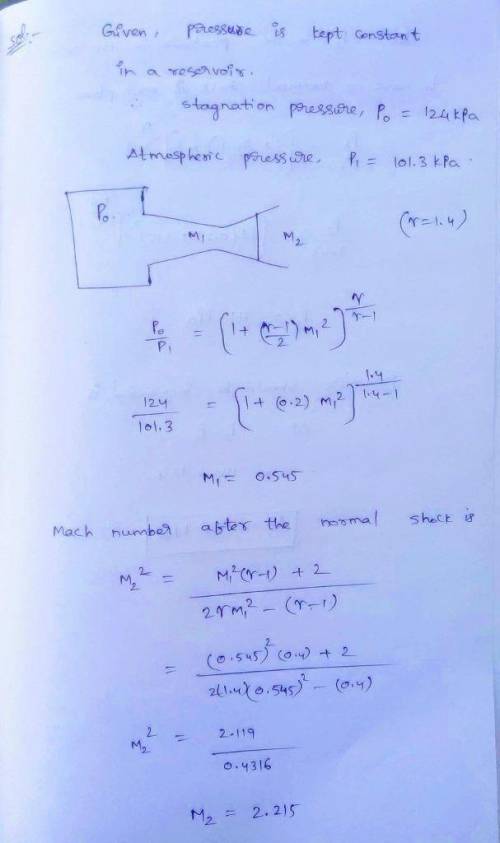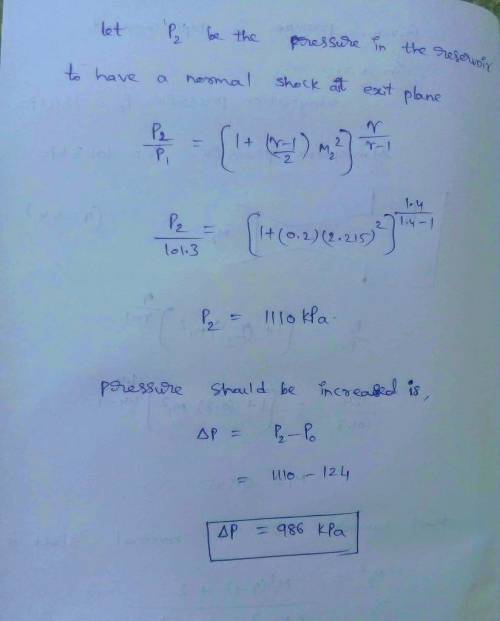
Physics, 07.04.2020 04:14 dnarioproctor
Air flows from a reservoir in which the pressure is kept at 124 kPa through a convergent–divergent nozzle and exhausts to the atmosphere where the pressure is 101.3 kPa. Under these conditions, the nozzle is choked and the flow is subsonic on both sides of the throat. To what value must the pressure in the reservoir be increased so that there is a normal shock on the nozzle exit plane?

Answers: 2


Other questions on the subject: Physics

Physics, 22.06.2019 02:40, esheagustafson
What happens when chlorine reacts with bromine? a. electrons move from the chlorine atoms to the bromine atoms. b. electrons move from the bromine atoms to the chlorine atoms. c. electrons are shared between the chlorine atoms and the bromine atoms. d. electrons become delocalized among the atoms.
Answers: 2

Physics, 22.06.2019 03:00, BeautyxQueen
Which of the following is not a part of the respiratory system? a. pharynx b. trachea c. pancreas d. larynx hurrim timed
Answers: 1

Physics, 22.06.2019 03:30, sere50
The focal length of a relaxed human eye is approximately 1.7 cm. when we focus our eyes on a close up object, we can change the refractive power of the eye by about 16 diopters. (a) does the refractive power of our eyes increase or decrease by 16 diopters when we focus closely? explain. (b) calculate the focal length of the eye when we focus closely.
Answers: 3
You know the right answer?
Air flows from a reservoir in which the pressure is kept at 124 kPa through a convergent–divergent...
Questions in other subjects:


English, 22.03.2021 15:40



Mathematics, 22.03.2021 15:40

Mathematics, 22.03.2021 15:40

Chemistry, 22.03.2021 15:40







